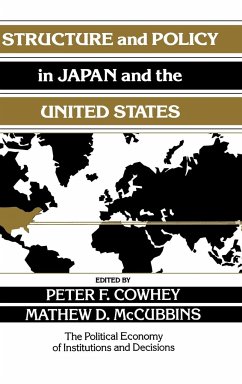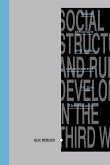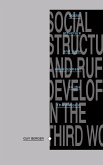Just when Japan and the United States are both caught up in a major debate over the effectiveness of their governments this volume offers new explanations of their comparative strengths and weaknesses. Why can Japan keep building nuclear power plants while it is has a hard time building an information superhighway? Why is the opposite the case in the United States? Will political reform change public policy in Japan? Would it make a difference in the United States? This volume explains why and how. This is one of the few volumes on the two countries that offers detailed studies of value to policy makers plus scholars and students of comparative policy, comparative foreign policy, and comparative economic policy. It can serve the needs of courses dealing with both politics and economics.
Table of contents:
1. Introduction Peter Cowhey and Mathew D. McCubbins; Part I. Structure and Politics: 2. The structural determinants of electoral cohesiveness: England Japan and the United States Gary W. Cox and Frances M. Rosenbluth; 3. Party provision for personal politics: dividing the vote in Japan Mathew D. McCubbins and Frances M. Rosenbluth; 4. The appearance of power: legislators bureaucrats and the budget process in the United States and Japan Mathew D. McCubbins and Gregory W. Noble; 5. Perceptions and realities of Japanese budgeting Mathew D. McCubbins and Gregory W. Noble; Part II. Politics and Policy: 6. Telecommunications policy: structure, process outcomes Roger G. Noss and Frances M. Rosenbluth; 7. The politics of nuclear power in Japan and the United States Linda Cohen, Mathew D. McCubbins and Frances M. Rosenbluth; 8. The politics of foreign policy in Japan and the United States Peter Cowhey; 9. Coordinating economic policies: a schematic model and some remarks on Japan-US exchange rate politics Haruhiro Fukui and M. Stephen Weatherford; 10. Conclusion Peter Cowhey and Mathew D. McCubbins.
Just when Japan and the US are both caught up in a major debate over the effectiveness of their governments this volume offers new explanations of their comparative strengths and weaknesses. Why can Japan keep building nuclear power plants but face difficulty building an information superhighway? Why is the opposite the case in the US?
This volume compares the strengths and weaknesses of governments in Japan and in the US.
Hinweis: Dieser Artikel kann nur an eine deutsche Lieferadresse ausgeliefert werden.
Table of contents:
1. Introduction Peter Cowhey and Mathew D. McCubbins; Part I. Structure and Politics: 2. The structural determinants of electoral cohesiveness: England Japan and the United States Gary W. Cox and Frances M. Rosenbluth; 3. Party provision for personal politics: dividing the vote in Japan Mathew D. McCubbins and Frances M. Rosenbluth; 4. The appearance of power: legislators bureaucrats and the budget process in the United States and Japan Mathew D. McCubbins and Gregory W. Noble; 5. Perceptions and realities of Japanese budgeting Mathew D. McCubbins and Gregory W. Noble; Part II. Politics and Policy: 6. Telecommunications policy: structure, process outcomes Roger G. Noss and Frances M. Rosenbluth; 7. The politics of nuclear power in Japan and the United States Linda Cohen, Mathew D. McCubbins and Frances M. Rosenbluth; 8. The politics of foreign policy in Japan and the United States Peter Cowhey; 9. Coordinating economic policies: a schematic model and some remarks on Japan-US exchange rate politics Haruhiro Fukui and M. Stephen Weatherford; 10. Conclusion Peter Cowhey and Mathew D. McCubbins.
Just when Japan and the US are both caught up in a major debate over the effectiveness of their governments this volume offers new explanations of their comparative strengths and weaknesses. Why can Japan keep building nuclear power plants but face difficulty building an information superhighway? Why is the opposite the case in the US?
This volume compares the strengths and weaknesses of governments in Japan and in the US.
Hinweis: Dieser Artikel kann nur an eine deutsche Lieferadresse ausgeliefert werden.








